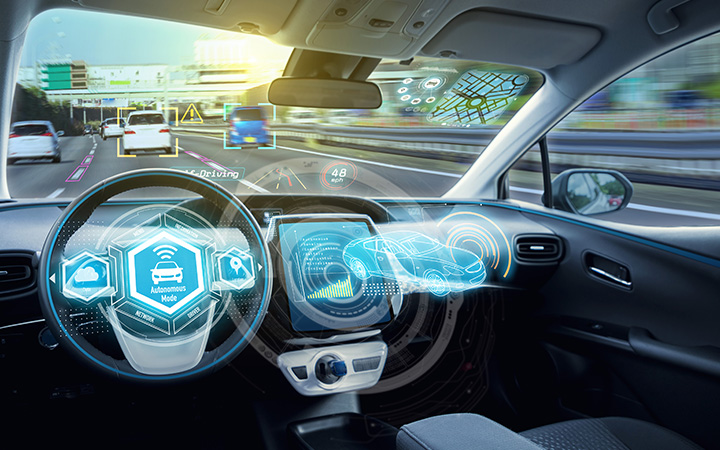For an aftermarket supplier, it’s a worrying string of promises: the cars of the near future will have fewer parts, those parts will experience less wear and tear, the cars themselves will be less likely to crash, and they will probably be harder to customise, too.
Taken together, that statement makes the impending mainstream arrival and adoption of electric vehicles (EVs) read like a wholesale threat to any supplier’s business model. But is it really?
A major new report from McKinsey and Company reveals just how disruptive the switch to EVs is going to be—and there’s plenty for suppliers to get their teeth into. The key message, though, is that if we don’t pay attention and prepare now, we risk being left behind.
Called Making Every Part Count, the report looks at disruptions in the automotive aftermarket for light vehicles—specifically the parts market—until 2030. It uses an analysis of the technological trends in overseas markets impacting 100 key vehicle components to forecast probable effects on workshop revenues. It incorporates some of the major shifts in our industry abroad, including digitisation, electrification, autonomous driving and shared mobility.
While the report used the US, European (UK, Germany, Italy and France) and Chinese markets to calculate its results, and did not include Australia and New Zealand, it does at least give us a clear indication of the trends we’re likely to see here, too.
Disruption is coming
Let’s look at the scale of the disruption.
McKinsey predicts a 15% increase in the size of the global car parc in 2030 over 2020 levels and anticipates 18 to 26% of the global car parc is likely to be EVs.
While, anecdotally, there’s a reluctance in the automotive aftermarket in Australia and New Zealand to believe EVs will be a part of our future any time soon, a report from the Automotive Aftermarket Suppliers Association (AASA), released in 2021, warned workshops and suppliers to expect “accelerated adoption” of EVs as soon as the total cost of ownership reached parity with traditional internal combustion engine vehicles (ICEs).
The AASA expected that to happen “in about five years”, if not sooner “if ambitious battery cost targets are achieved by key OEMs”. That scenario is relying on market forces; that doesn’t even take into account the possibility that governments may regulate against ICEs in favour of EVs in a bid to reach the carbon emissions targets agreed to as part of climate change commitments.
If that prediction is right—or even if it’s a few years out—aftermarket suppliers need to be ready. The disruption that comes with it will be no small thing: McKinsey says the component spend for battery EVs (BEVs) is 40% less than for an ICE.
The market for conventional parts will vanish
McKinsey is blunt. The report points out that the market for conventional parts is set to become “increasingly marginal and ultimately vanish”.
“Overall, BEVs have fewer moving parts, less wear and tear and, thus, significantly lower maintenance costs,” the report authors state.
“The reduced wear and tear of BEVs is also applicable to plug-in hybrids (PHEVs) and hybrids (HEVs), albeit to a lesser extent. This is because these hybrids are more complex, due to having both an electric motor and a combustion engine, as well as a sophisticated transmission system.”
But that doesn’t have to be bad news.
“The aftermarket is expected to benefit from this trend and the complexity of hybrids,” the report states. “Besides, given the recent emergence of powertrain electrification, it will take several years until (fully electric) EVs enter the relevant age segment of the aftermarket.”
Ultimately, however, electrification is set to have a negative impact on the sale volumes of accessories, brakes, starter batteries, alternators, fluids and traditional ICE powertrain parts.
“However, other chassis components, electric powertrain parts, thermal parts and tyres will benefit from the volume effect and technical layout of (fully electric) EVs,” the report states.
The impacts of digitisation and B2B e-commerce
There are other technological developments besides the powertrain that are set to impact supplier businesses, too. One of those is the internet and e-commerce, which McKinsey says will “reduce information asymmetries between aftermarket players, increase price transparency in the value chain and reshape the user experience and customer journey”.
They’re not just talking about the general public there; McKinsey says ecommerce and state-of-the-art information technology systems will fundamentally change business-to-business transactions.
“Research indicates that the cost of parts, the ability to ship, the ability to identify the right parts (for workshops and end consumers), technical complexity, the essentiality of the part to basic vehicle functioning, and consumer preference are key drivers of online sales success,” the report states.
The impending impact of autonomous driving
The other great technological advance about to disrupt the aftermarket is advanced driver assistance systems (ADAS). McKinsey predicts up to 60% of passenger vehicles sold in 2030 could be equipped with L3 ADAS and perhaps another 14% with L4—although the report authors admit this is “an aggressive scenario”.
“Autonomous driving will reduce the number and severity of collisions but increase product complexity and the cost of parts,” the report states. “More sensitive components are always needed to secure autonomous vehicles’ full functionality, leading to shorter maintenance intervals (such as frequent diagnostic checks).”
That could change the way your business looks and our industry operates.
“We expect further consolidation in the market as only highly specialised and technically equipped workshops—as well as distributors that are able to provide for the specific training, equipment and software needs related to ADAS—will persist in the future aftermarket,” the report says.
“Autonomous driving will make vehicles less customisable via appearance accessories, reduce collision frequencies and increase the aftermarket demand for ADAS components.”
Revenue growth in an evolving aftermarket
While the McKinsey report suggests an overall revenue growth from vehicle components, it also warns that’s masking “significant internal variation”. That is to say, there’s going to be growth in some component categories and a contraction in others.
“These opposing outcomes will be driven largely by the increase in standardisation, the decrease in wear and tear, the growing obsolescence of some parts, and the growing importance of other function in the technology trends,” the report states.
So, what areas and kinds of components are we talking about? Helpfully, McKinsey has divided these into four areas.
High growth, low market share
These components are largely new to the market as most are only used in EV and autonomous vehicles.
- HV batteries
- Full hybrid machines
- Fully plug-in hybrid machines
- Cooling systems
- Battery junction boxes.
High growth, high market share
These are powertrain-agnostic parts that benefit from the over-forecasted increase in car parc size without being affected by electrification.
- Tyres
- Starter batteries
- Brake pads
- Brake rotors
- Alternators
Low growth, low market share
These components represent classic wear and tear replacement parts. There’ll be limited growth for these because of the impacts of electrification and a relatively low market share.
- Camshafts
- PCV valves
- Distributor drive belts
- Thermostats
- Engine bearings
Low growth, high market share
These components also represent classic wear and tear replacement parts. Despite the impact of electrification, these parts still exhibit some growth in demand (driven by car parc growth and ageing).
- Collision parts
- Oil filters
- Exhaust pipes
- Catalytic converters
The great big risk ahead of us, and the opportunity in front of us
With potential for such a fundamental market disruption there’s another risk for the aftermarket—the possibility OEMs might be able to gain control of the entire lifetime of the vehicle and therefore increase their share of the aftermarket.
“Given the complexity of next-generation vehicles—mobile software centres largely driven by electric powertrains—strategic adaptation can also lead to new opportunities for OEMs,” McKinsey warns.
The coming decade will be characterised “by change and uncertainty”, and current revenue pools and business models will shift significantly. The good news for suppliers is there’s still plenty of time to develop a strategy and prepare for the changes and challenges ahead. Here’s what McKinsey recommends:
Keep getting the basics right
New business models require significant investment, which should be financed through traditional profit streams. McKinsey points out that the size of the car parc will remain relatively stable leading up to 2030 and suppliers need to “keep their current business afloat while preparing for the future”.
Start preparing for transition now
“Transformations do not happen overnight,” McKinsey says. “The stepwise adaptation across all organisational levels and with the adequate industry perspective is key to the long-term survival of traditional organisations.”
In other words, start planning for your transition now, but only make the move when the time is right—as you would with any other business decision.
Find your own pace for change
And when will the time be right for transition? McKinsey argues that’s up to you and your position in the market. If you’re a market leader, you may choose to go early. If you’re not, then consider whether it’s better to hold back while the market leaders set the new standards, cope with incoming regulations and spend their capital developing the market.
So, what’s your strategy going to be?
McKinsey recommends suppliers review their product portfolio and identify component niches and emerging categories, so you can prioritise for capability building. Look closely at your funnel for innovation. Best practice is going to involve omnichannel product management to enhance pricing and brand building.
The report authors also suggest building networks with OEMs and other players “to prioritise customer journeys and digital partners”. That is to say, to ensure you’ve got the relationships you need in place to inform your decision-making and investments as you manage the likely disruption to come.
“The automotive aftermarket industry is at the precipice of a technology-driven disruption,” McKinsey says. “Even though change might not be immediately evident in the everyday operations of aftermarket players, the disruption is already apparent in new car sales and will ultimately be felt in the aftermarket.
“With this disruption certainly comes risk that needs to be managed, but the business opportunity is significant. We recommend companies start with thoughtful preparation now, in order to be able to fully capture the aftermarket’s future value.”
The contents of and any opinions contained in the 2021 McKinsey & Co Making Every Part Count report do not reflect the opinions of Capricorn Society Ltd and Capricorn makes no representation or warranty as to the accuracy, completeness or reliability of any material in this report.


